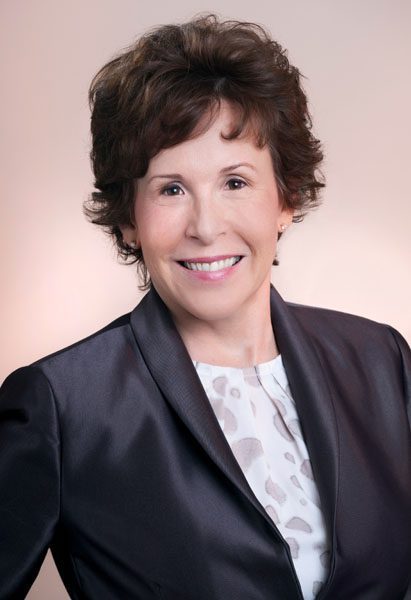Whether you’re trying to land a new client, find your next great team member, or vet a vendor, here’s how sales trainer Connie Kadansky helps clients get their “ask” in gear.
When it comes to conducting effective interviews, sales trainer and Master Certified Coach Connie Kadansky knows the drill. Having been in the business for more than 25 years, Kadansky has “a niche in helping salespeople overcome sales reluctance — the emotional hesitation to prospect for new business.” Her tagline? “I help salespeople get their ‘ask’ in gear.” Discover the power of Interview Tactics That Work as shared by Kadansky.
Kadansky initially fell into the role since “the teacher teaches what the teacher needs to learn.” As a motivated, goal-oriented salesperson who was experiencing “sales call reluctance,” she sought help. The solution? Becoming a licensee of the two behavioral scientists who own the trademark Sales Call Reluctance. “I am fascinated by sales and the skills required to be an effective salesperson,” she says.

Based on what she’s learned over the years, Kadansky’s tips for conducting an effective interview for prospective clients include the following:
- Create value for the prospect. When you are interviewing prospects, say to yourself, “It is not about me.” Let go of a self-centric mindset. We tend to be less-than-our-best or even at our worst when we are thinking self-centeredly (for example, “What’s in it for me? How do I get what I want? What will they think of me? How can I look good?”).
- Be conscientiously focused on value-creation. When you connect to a prospect’s humanness, call reluctance goes bye-bye. You can discover what is most important to the prospect and be more present.
- Stay curious. It is not about you. Tone of voice matters — in fact, it’s much more important than the words you speak.
- Perfect your value proposition. When someone asks you what you do, you have only 11 seconds to have them “lean in.”
- Ask “no” questions. Most prospects have decision fatigue; they are worn out. So, relieve them of this fatigue by asking them “no” questions and stop craving “yes” answers. For example, “Are you opposed to having a quick cup of coffee? Would you be opposed to sharing how you currently handle XYZ? Are you against providing XYZ documents so we can figure out how we can help?”
- Be prepared. When making prospecting calls, ask this question: “Is now a bad time to talk?” Some prospects will answer “yes,” but most will say “no.” Be prepared to continue the conversation.
- Practice your poise. When you speak, are you present, poised and confident? Brush up on your skills. In person, only 7 percent of your communication is the words you speak, 38 percent is your tone, and 55 percent is your body language. When you are on the phone, 27 percent of the communication is the words you speak and 73 percent is your tone. If you are grumpy, gloomy and pessimistic, guess what? Your attitude will show up in your tone.
Kadansky also advises to always schedule your next appointment before parting ways — never leave an appointment with, “I’ll get back to you.” Both parties should be crystal clear on the agreed next steps, including a date and time to reconvene.

To conduct an effective interview for vendors, Kadansky suggests preparing by writing down your conversational goal and by learning as much as you can about them from their website. “What do you want to come out of the conversation?” she asks. “Decide your non-negotiables before you talk. Where are you willing to deviate from your ideal situation?” Also, if you are a serious buyer, be prepared to truthfully share what you want and need, and to express your sense of urgency. “The more transparent, the better service you will receive,” she says, “Be super curious. If you don’t understand something, do not pretend to understand. Ask questions.”
When seeking new hires, Kadansky says to position your company positively and to articulate what’s in it for them should they choose to join your team. “Be prepared with thoughtful questions,” Kadansky adds. “For example, ‘What style of management allows you to be most productive? In what areas do you feel you might benefit from further training?’”
Kadansky is also a believer in pre-hire assessments. There are dozens of credible assessments, she says, including the SPQ Gold Test for sales positions and the Caliper Test, which is widely used for a variety of positions.
How does all of this advice translate to an increasingly virtual world? Kadansky thinks the best way to prepare for video interviews is to: “Prepare. Prepare. Prepare. Begin with the end in mind: Be crystal clear on the goal of the interview. Be curious. Listen deeply.” It’s also important to recognize and vocalize what you perceive, using wording such as: “It seems like this is important to you. It seems like you are under pressure. It seems like you are happy where you currently work.”
“Be bold,” she says. “If you are incorrect, the prospect will correct you.”
It’s also advisable to always ask folks how much time they have set aside for the interview. This helps everyone understand the agenda and stay on track. Kadansky does believe that virtual interviews can be effective, and she finds Look Me in the Eye, by Julie Hansen, to be a must-read about using video to build relationships with customers, partners and teams.
When it comes time to get ready for an interview, Kadansky prepares a worksheet revealing the goal of the conversation from her perspective. She researches the person she’s interviewing and what’s most important to them — and tries to understand where they might be coming from. “I prepare some calibrated questions that begin with ‘what’ and ‘how’ so that my counterpart can actively participate,” she shares. “For example, ‘What are you hoping comes out of our conversation?’ ‘What are we trying to accomplish?’ ‘How does making this deal affect XYZ?’”




